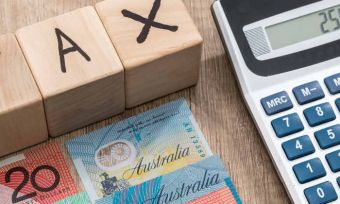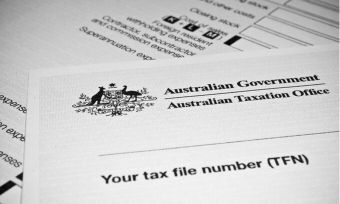As any parent can attest, raising a child, or children, is not easy. Did you know there’s a government payment called the Family Tax Benefit that’s available to eligible Australians to help with the cost of raising children? Senior Tax Manager at Etax, Liz Russell, explains.
The Family Tax Benefit (FTB) is a two-part government payment designed to help eligible Australians with the cost of raising their children. Generally available to low- and middle-income families, it’s broken down into two parts:
- Part A – a payment made per child.
- Part B – a payment made per family, in addition to Part A.
What eligibility criteria apply for Family Tax Benefit Part A and B?
Not everyone is entitled to receive Family Tax Benefit payments. There are certain eligibility criteria that must be met to receive one (or both) payments. For both Family Tax Benefit A and B, the eligibility criteria are as follows:
- You care for a dependent child who’s 0–15 years old, or 16–19 years old if they meet certain study requirements.
- You pass the relevant income tests:
- This aspect of FTB eligibility depends on your family income and the number of children in your care.
- You pass the residency rules:
- You live in Australia and have one of:
- Australian citizenship
- a permanent visa
- a Special Category visa
- a certain temporary visa (e.g a Partner Provisional or Temporary Protection visa)
- Newly arrived Australian residents generally have to wait one year before they can receive FTB payments, although there are some exemptions to this.
- You live in Australia and have one of:
- You care for the child at least 35% of the time.
In addition, to be eligible for Family Tax Benefit Part B, you must also be a single parent, non-parent carer, grandparent carer or member of a couple with one main income.
The age requirements are different for Part B as well – the child you’re caring for must be no older than 13 if you’re in a couple and no older than 15 if you’re single (or 18 if you’re single and they meet the study requirements).
How much are Family Tax Benefit Part A and B payments?
Family Tax Benefit payments depend on a range of individual circumstances. Primarily, your rate of payment is dependent on your adjusted family taxable income and the age of your children.
Part A Payment Amounts:
At the time of writing, the base rate for Family Tax Benefit Part A is $61.46 per child per fortnight. You may receive more or less than this depending on your circumstances. The maximum rate you can receive per child, per fortnight, is currently:
- $191.24 for a child 0 to 12 years
- $248.78 for a child 13 to 15 years
- $248.78 for a child 16 to 19 years
- $61.46 for a child 0 to 19 years in an approved care organisation.
In addition, if you’re eligible for the FTB Part A you may also be entitled to the Family Tax Benefit Part A Supplement Payment. This is worth up to $788.40 for the 2021/22 financial year. Again, this amount can vary depending on how many children you have, your family income, if you share care and your Family Tax Benefit Part A eligibility.
Part B Payment Amounts:
As with Part A, the amount of Part B payment you may receive comes down to your individual circumstances and is not the same for everyone. The maximum rate you can currently receive per family, per fortnight, is:
- $162.54 when the youngest child is 0 to 5 years of age.
- $113.54 when the youngest child is 5 to 18 years of age
In addition, you may also be entitled to the Family Tax Benefit Part B supplement payment of up to $383.25 per family for the 2021/22 financial year. Again, this amount can vary and depends on your family income, if you share care and your Family Tax Benefit Part B eligibility.
What are the income thresholds for Family Tax Benefit Part A and B?
Assuming you meet the other eligibility tests, your adjusted family income determines how much you can receive in Family Tax Benefit Part A and Part B payments. How many children you have can also affect the payment amount.
Part A
At the time of writing, the Part A adjusted family taxable income thresholds are:
- $56,137 or less: You may be eligible for the maximum payment.
- Between $56,137 and $99,864: Your Part A payment reduces by 20c per dollar earned above $56,137 until it reaches the base rate of $61.46 per fortnight per child. Annual income limits where you may no longer be eligible to receive any payment may also apply, depending on how many children you have and their ages.
- Above $99,864: Your Part A payment reduces by 30c per dollar earned above $99,864 until it reaches nil. Annual income limits where you may no longer be eligible to receive any payment also apply depending on how many children you have and their ages.
Part B
The current Part B adjusted family taxable income thresholds are:
- Single-parent family: $100,900 or less
- Partnered parent family: Primary earner earns $100,900 or less. Secondary earner earns up to $5,840. Payments reduce by 20c per dollar above $5,840.
- Grandparent single carers: $100,900 or less
- Partnered grandparent carers: Primary earner earns $100,900 or less and secondary earner up to $28,945 if the youngest child is under 5, or up to $22,557 if youngest child is 5–18.
How can you apply for Family Tax Benefit Part A and B?
You can apply for the Family Tax Benefit via Centrelink on the myGov website. To apply, select ‘make a claim’ from the Centrelink homepage and then choose ‘Apply for family assistance (including paid parental leave)’ to start your claim.
Depending on your circumstances, you can then choose to have some or all of your payments made fortnightly. Or, if you prefer, payments can be paid in a lump sum at the end of the financial year, once you have confirmed your income by lodging your tax return.
Important note if claiming payments fortnightly:
It’s very important to provide Centrelink with an accurate family income estimate when you submit your application, and to update them with a new estimate if your circumstances change. This is because at the end of the financial year when you submit your tax return, Centrelink will check that the income you received during the financial year matches the estimate you provided (which your Family Tax Benefit payments were calculated on).
If your income estimate was too low (meaning you received too much Family Tax Benefit), you may be required to pay some of it back. On the other hand, if your income estimate was too high, you may receive a lump sum payment for any additional Family Tax Benefit you’re entitled to.
What can affect payments for Family Tax Benefit Part A and B?
There are several other circumstances or factors which could impact your eligibility for Family Tax Benefit. For example:
- Changes in income: If your family earns more or less income in a financial year, your payment rates could change. That’s why it’s important to keep your income estimate up to date with Centrelink.
- Maintenance action test: If you or your partner care for a child from a past relationship and you don’t take reasonable steps to get child support, you may only receive the base rate of Family Tax Benefit Part A.
- Maintenance income: If you or your partner receive child support payments, you may receive a lower or no Family Tax Benefit payment.
- Returning to work: As FTB Part B is generally paid when there is only one income earner, a parent returning to work after having a child could affect eligibility to receive Part B.
- Age of children: There are different payment rates depending on the age of your children, and for older children if they’re still studying.
- Immunisation: To receive the full Family Tax Benefit Part A payments you’re entitled to, your children need to meet government immunisation requirements by their fourth birthday. If they don’t, the government may reduce your payments.
- Change in care arrangements: If the amount of time you care for a child changes, your payment amounts may also change.
Summary
The Family Tax Benefit can provide valuable support with the costs of raising children. While the specifics can be complicated, it’s most important to accurately report your family situation and estimate your income, as well as notify Centrelink each time your circumstances change. This allows Centrelink to easily calculate your eligibility and provide you with a handy financial boost if you’re part of an eligible low- or middle-income family.
Main image source: goodluz/Shutterstock.com
This content was reviewed by Sub Editor Tom Letts and Sub Editor Jacqueline Belesky as part of our fact-checking process.







Share this article